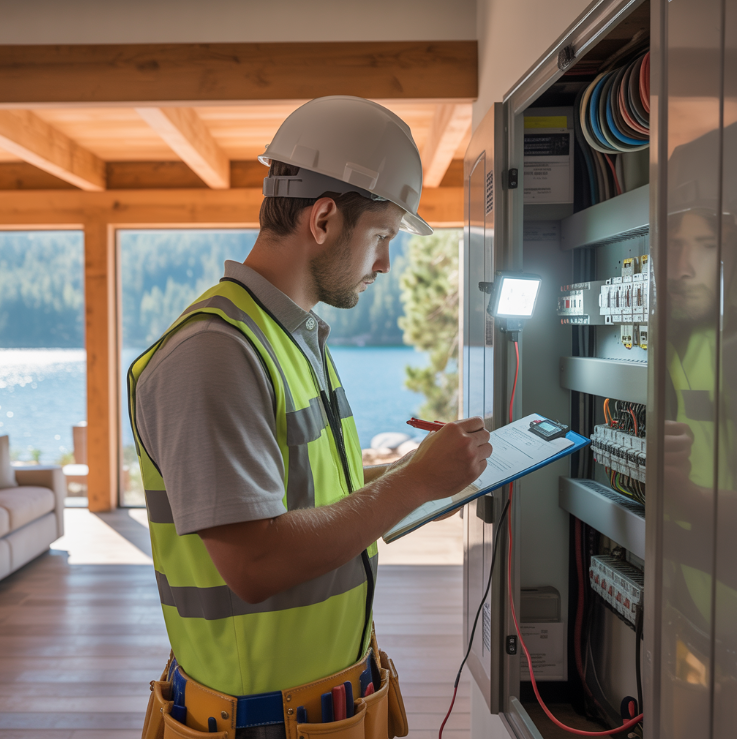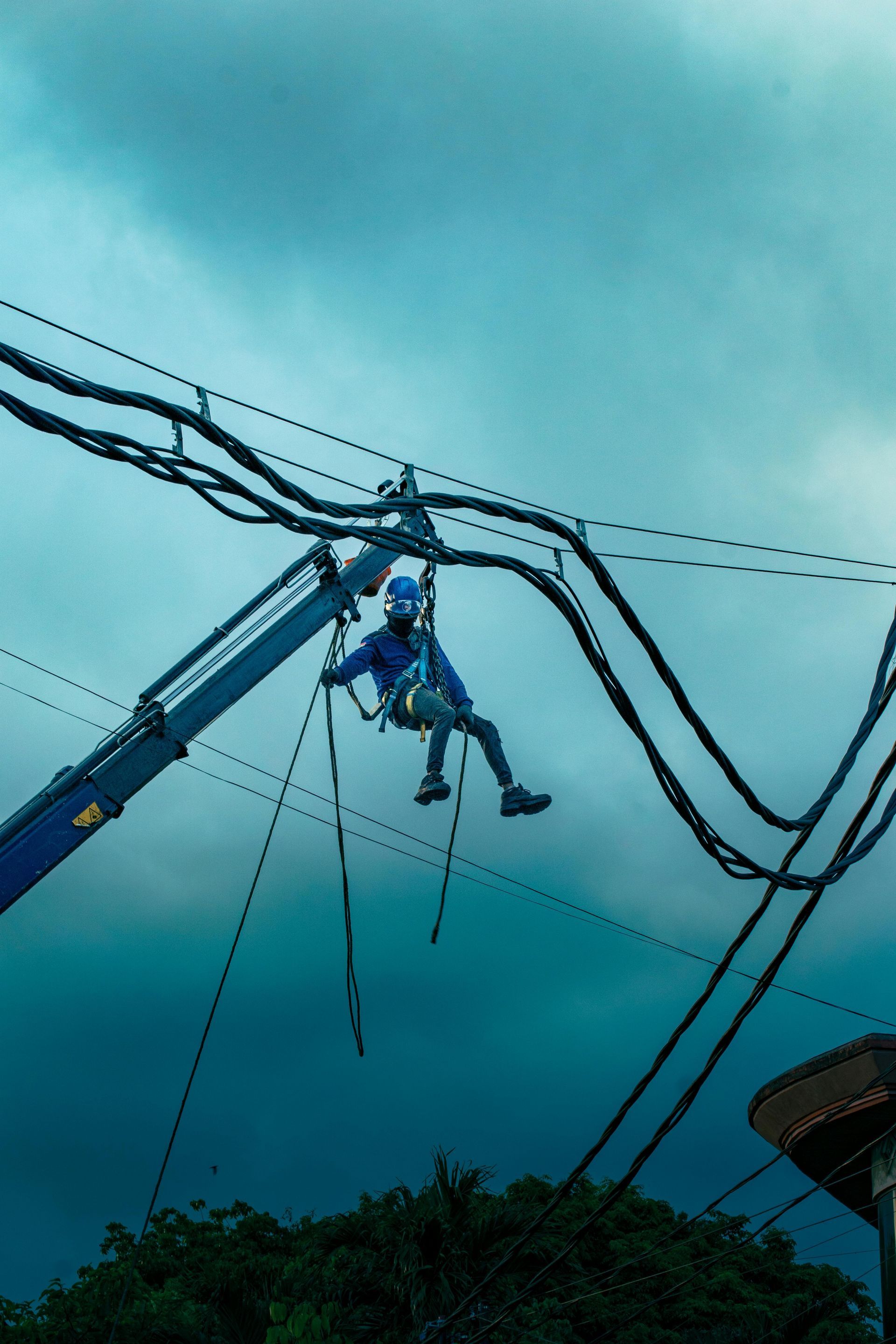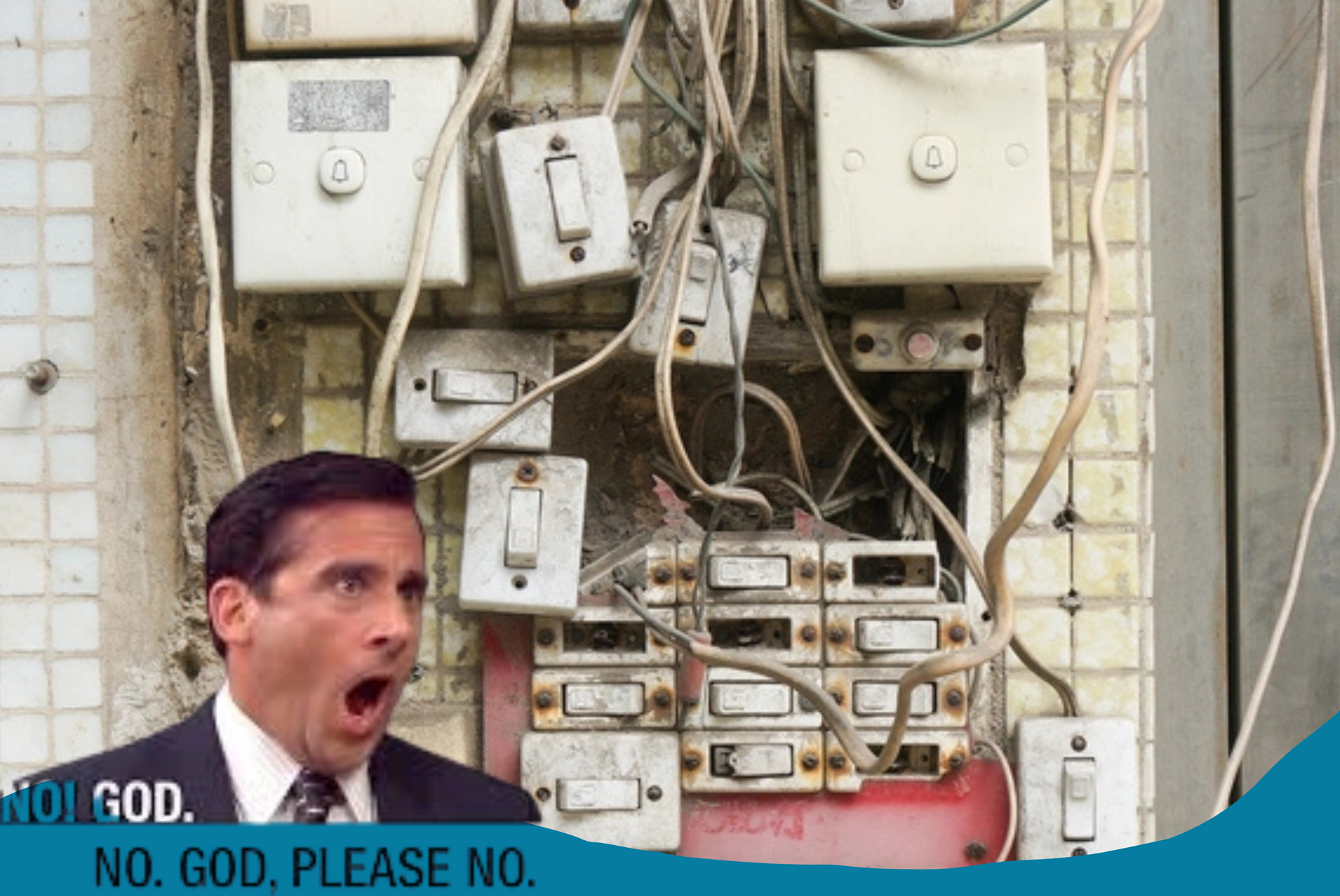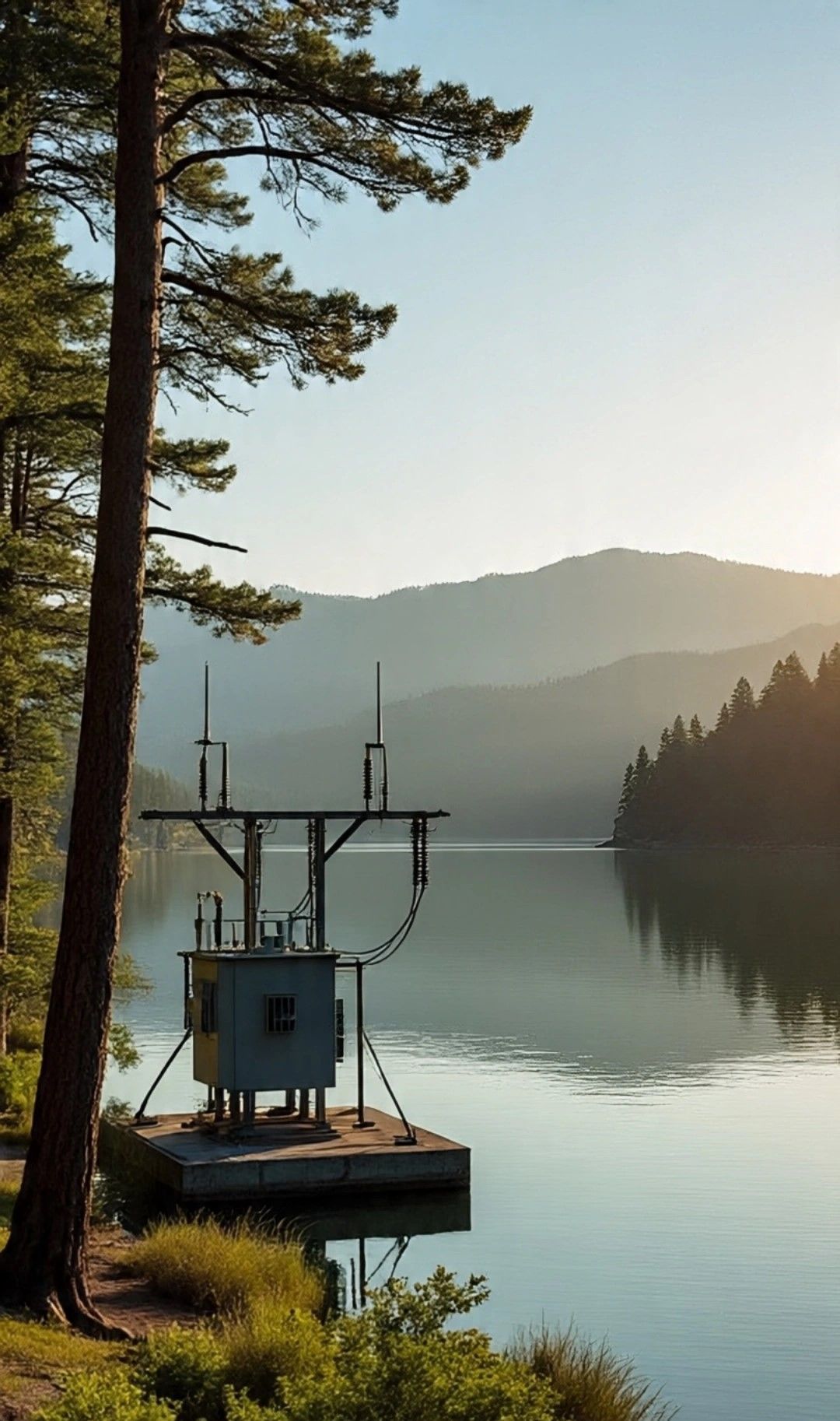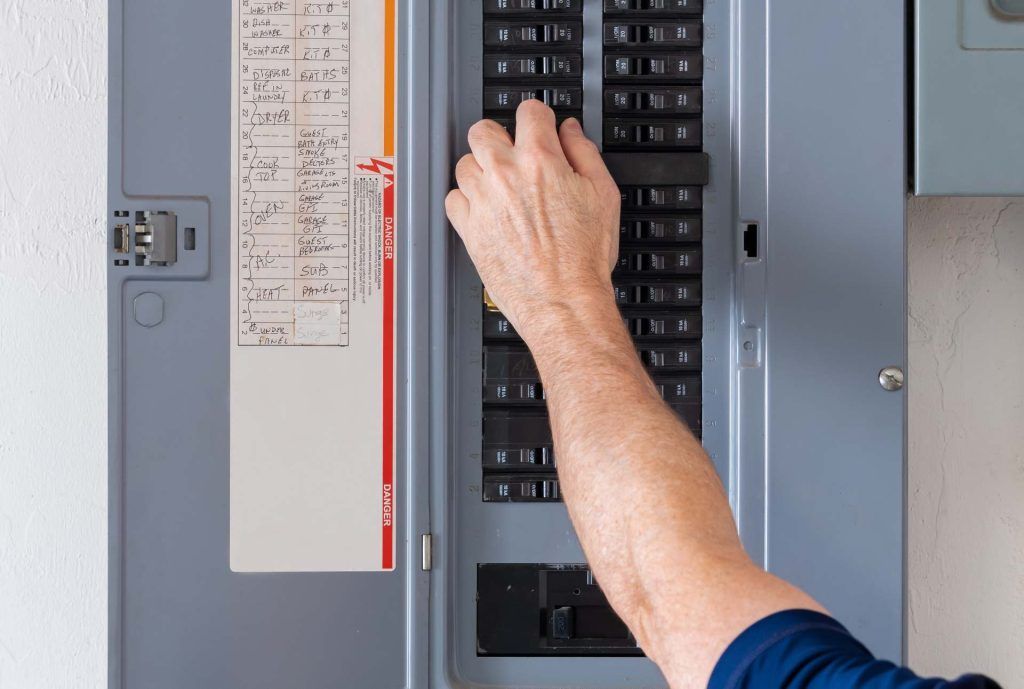Buying or selling a mountain home in Lake Arrowhead, Blue Jay, or Crestline? One of the most critical—and often overlooked—steps in the process is a thorough electrical inspection. Whether you're a buyer protecting your investment or a seller preparing your property for market, understanding what an electrical inspection entails can save you thousands of dollars and prevent serious safety issues down the road.
Why Lake Arrowhead Properties Need Special Electrical Attention
Mountain homes present unique electrical challenges that don't exist in valley properties. The combination of older construction, harsh weather conditions, and remote locations creates a perfect storm of potential electrical problems.
Many Lake Arrowhead cabins were built between the 1950s and 1980s as vacation retreats. These charming properties were originally designed for occasional weekend use—not year-round living with modern appliances, home offices, and electric heating systems. As a result, their electrical systems are often:
Undersized for current demands: 60-100 amp panels that can't handle today's power needs
Missing critical safety features: No GFCI or AFCI protection in wet areas or bedrooms
Equipped with outdated wiring: Aluminum wiring, knob-and-tube, or cloth-insulated wiring that poses fire risks
Improperly modified: DIY additions that don't meet code requirements
Add in decades of snow, ice, wind, and temperature fluctuations, and you have a recipe for hidden electrical hazards that only a professional inspection can uncover.
What Does a Professional Electrical Inspection Include?
A comprehensive electrical inspection goes far beyond checking if the lights turn on. Here's what a licensed Lake Arrowhead electrician examines during a pre-purchase or pre-listing inspection:
Main Electrical Panel Assessment
The electrical panel is the heart of your home's power system. Inspectors check for:
Panel capacity: Is it adequate for the home's size and current electrical loads?
Brand and age: Certain panels (Federal Pacific, Zinsco) are known fire hazards that insurance companies often won't cover
Proper labeling: Are circuits clearly identified?
Signs of overheating: Discoloration, burning smells, or rust indicating moisture intrusion
Double-tapped breakers: Multiple wires on a single breaker, a common but dangerous shortcut
Proper grounding: Essential for safety and code compliance
Wiring Type and Condition
The inspector evaluates the wiring throughout the home:
Material: Copper is ideal; aluminum requires special considerations
Insulation type: Cloth, rubber, or modern plastic insulation
Visible damage: Rodent damage (common in mountain properties), physical wear, or moisture damage
Wire gauge: Proper sizing for the electrical load
Junction boxes: All connections must be housed in accessible, covered boxes
Outlet and Switch Testing
Every receptacle and switch is checked for:
Proper grounding: Three-prong outlets must actually be grounded
GFCI protection: Required in bathrooms, kitchens, garages, and outdoor locations
Polarity: Hot and neutral wires must be correctly connected
Functionality: No loose connections or damaged components
Arc-fault protection: Required in bedrooms and living areas in newer construction
Exterior and Weather-Exposed Systems
Mountain properties face unique outdoor electrical challenges:
Exterior outlets: Must be GFCI-protected and weatherproof
Exterior lighting: Proper sealing and mounting to withstand snow loads
Service entrance: The point where power enters the home must be secure and weather-sealed
Meter base: No signs of water intrusion or damage
Heat tape circuits: Many Lake Arrowhead homes have electric heat tape for pipe protection
Special Equipment Evaluation
The inspection also covers:
Subpanels: Proper installation and grounding
Dedicated circuits: High-draw appliances need their own circuits
HVAC electrical connections: Proper sizing and protection
Water heater: Correct wiring and bonding
Well pump systems: If applicable, proper installation and protection
Red Flags Buyers Should Never Ignore
During a Lake Arrowhead home inspection, certain electrical issues should give any buyer pause. These problems indicate serious safety concerns or expensive repairs ahead:
1. Federal Pacific or Zinsco Electrical Panels
These panel brands, common in 1960s-1980s construction, have documented failure rates that create fire hazards. Breakers may not trip during overload conditions, allowing wires to overheat. Many insurance companies refuse coverage until these panels are replaced.
Cost to fix: $2,000-$4,000 for complete panel replacement
2. Aluminum Wiring
Aluminum wiring, used in some 1960s-1970s homes, expands and contracts differently than copper, creating loose connections over time. While not inherently dangerous if properly maintained, it requires special attention and certified installation methods.
Cost to remediate: $1,500-$5,000+ depending on home size and chosen solution
3. Knob-and-Tube or Cloth-Insulated Wiring
These outdated wiring methods weren't designed for modern electrical loads. They lack grounding, use degraded insulation, and are often brittle from age. Most insurance companies won't cover homes with active knob-and-tube wiring.
Cost to rewire: $8,000-$15,000+ for a complete home
4. Ungrounded Electrical System
Older two-prong outlets throughout a home indicate an ungrounded system. This poses shock risks and prevents proper operation of modern electronics and appliances. Simply replacing outlets without actually grounding them creates a false sense of security.
Cost to remedy: $3,000-$8,000 depending on extent of upgrades needed
5. DIY Work and Code Violations
Unpermitted electrical work is common in mountain properties. Sellers may have added outlets, lighting, or circuits without proper permits or professional installation. These modifications may not meet current code requirements and could be dangerous.
Cost varies: Depends on the extent of improper work
6. Moisture Damage or Rodent Issues
Mountain homes are susceptible to water intrusion from snow and ice, as well as rodent damage during winter months. Chewed wiring insulation creates shock and fire hazards that aren't always visible without opening walls.
Cost to repair: $500-$5,000+ depending on extent of damage
Smart Negotiation Strategies Based on Inspection Findings
Once you have an electrical inspection report, you have several options for moving forward:
For Buyers
Minor issues (loose outlets, missing cover plates, non-GFCI outlets in wet areas): Request the seller handle repairs before closing or ask for a small credit toward costs.
Moderate issues (undersized panel, subpanel problems, limited code violations): Negotiate a larger credit and hire your own licensed electrician to complete work after purchase.
Major issues (panel replacement needed, whole-home rewiring, significant safety hazards): Request the seller complete repairs with licensed contractor and provide receipts, or negotiate a significant price reduction. Consider whether the investment aligns with your budget.
Deal-breakers: If an insurance company won't cover the property due to electrical issues, or if repair costs exceed 10-15% of the purchase price, you may want to walk away unless the seller drastically reduces the price.
For Sellers
Getting a pre-listing electrical inspection is one of the smartest investments you can make. Here's why:
Avoid surprises: Address issues on your timeline rather than scrambling during the buyer's inspection contingency period.
Stronger negotiating position: When you've already handled repairs, buyers have less room to ask for credits or reductions.
Faster closings: Fewer contingencies and repair negotiations mean quicker transactions.
Higher sale price: Homes with updated electrical systems command premium prices and attract more qualified buyers.
Better marketing: You can advertise "recently upgraded electrical panel" or "full electrical system inspection available" in your listing.
Reduced liability: Disclosed issues that you've addressed protect you from potential post-sale claims.
When to Schedule an Electrical Inspection
Buyers should order an electrical inspection during the general home inspection period, typically 10-17 days after offer acceptance. While home inspectors check electrical systems, they're generalists—a licensed electrician provides deeper expertise and can open panels safely.
Sellers should schedule pre-listing inspections 4-6 weeks before listing. This gives you time to complete repairs and obtain necessary permits before photos and showings begin.
Year-round homeowners should have electrical inspections every 5-10 years as part of routine maintenance, especially in homes over 40 years old.
New property owners should schedule an inspection within the first year if one wasn't done at purchase, particularly if you're planning any renovations or upgrades.
The Cost of Not Getting an Inspection
Skipping an electrical inspection to save a few hundred dollars is false economy. Consider what you risk:
House fires: Electrical issues cause approximately 51,000 home fires annually in the United States, resulting in nearly $1.3 billion in property damage
Insurance denial: Many carriers require electrical system documentation for older mountain properties
Failed sale: Buyers will discover problems during their inspection, potentially killing your deal
Shock hazards: Ungrounded systems and faulty wiring pose serious injury risks
Failed equipment: Improper electrical systems can damage expensive appliances, electronics, and HVAC equipment
Code violations: Unpermitted work can complicate future sales and lead to costly compliance requirements
A professional electrical inspection costs $300-$600 for most Lake Arrowhead homes—a fraction of what you'll spend fixing problems discovered after purchase, or what you'll lose if your deal falls through.
Questions to Ask Your Lake Arrowhead Electrician
Not all electrical inspections are created equal. When hiring a Lake Arrowhead electrician for your pre-purchase or pre-listing inspection, ask:
Are you licensed by the California Contractors State License Board? (Verify C-10 electrical contractor license)
Do you have experience with mountain properties specifically? Lake Arrowhead homes have unique challenges
What does your inspection include? Get a clear list of what will be examined
Will you provide a written report? Essential for negotiations and documentation
Can you provide a repair estimate if issues are found? Helpful for budgeting and negotiations
Do you carry proper insurance? Liability and workers' compensation coverage protect you
What's your typical turnaround time for the report? You need answers quickly during transaction timelines
Can you obtain permits if repairs are needed? Streamlines the process if you move forward with work
Protecting Your Lake Arrowhead Investment
Whether you're buying your dream mountain retreat or preparing to sell your beloved cabin, a professional electrical inspection is non-negotiable. The unique challenges of mountain living—extreme weather, older construction, and remote locations—make electrical safety even more critical than in valley properties.
A thorough inspection reveals hidden problems, protects your investment, and gives you peace of mind that your home's electrical system is safe, reliable, and ready for decades of mountain living.
Don't let electrical problems derail your real estate transaction or put your family at risk. Work with experienced local electricians who understand Lake Arrowhead properties and can provide the expertise you need to make informed decisions.
Schedule Your Lake Arrowhead Electrical Inspection Today
Lake Arrowhead Electrical provides comprehensive electrical inspections for buyers, sellers, and homeowners throughout the San Bernardino Mountains. Our detailed reports give you the information you need to negotiate confidently and protect your investment.
Our inspection services include:
Complete electrical system evaluation
Detailed written reports with photos
Code compliance assessment
Repair estimates and prioritization
Pre-listing inspections for sellers
Pre-purchase inspections for buyers
Permit assistance for needed repairs
Call (909) 403-4740 to schedule your electrical inspection.
Proudly serving Lake Arrowhead, Blue Jay, Crestline, Running Springs, Cedar Glen, Twin Peaks, and all San Bernardino Mountain communities.
Lake Arrowhead Electrical
is a licensed electrical contractor (C-10) specializing in mountain property electrical services. We understand the unique challenges of mountain living and provide honest, reliable service to protect your home and family.
